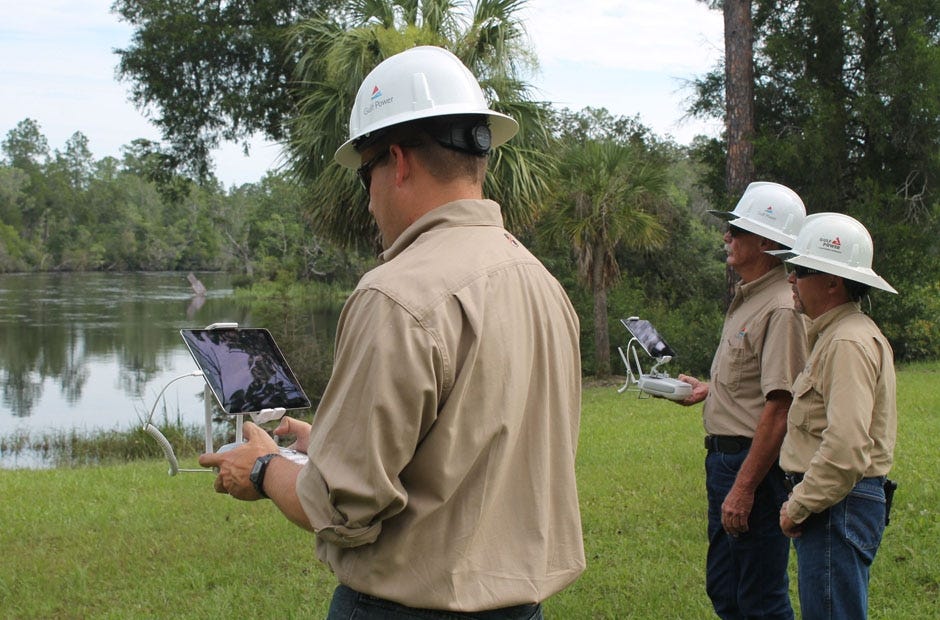![From left are Jason Benton, David Gallman, and Curt Cunningham. Gulf Power transmission line engineer Benton pilots a drone to inspect a power line structure on an island as Gallman acts as his primary spotter, with a secondary controller and Ipad. Cunningham acts as a secondary spotter looking out for any nearby aircraft. [AARON LITTLE | Press Gazette]](http://127.0.0.1/wordpress/wp-content/uploads/2022/01/ghows-DA-531dd3aa-742f-7617-e053-0100007fc1f5-3280e0be.jpeg)
MILTON — Gulf Power Company has a new tool to inspect power lines: the unmanned aircraft system, also known as a drone.
Rather than expending the time and labor, as well as risking injuries, line workers trained as drone pilots can get pictures and video of power line structures previously difficult to study.
Southern Company, which owns Gulf Power, started investigating drones for power line work in 2015, according to Gulf Power Corporate Communications Specialist Kimberly Blair. With established protocols and training by Southern, Gulf Power began using drones at the beginning of 2017, she said.
“Recently, the drone was used to inspect the new lines that are part of the Gulf Coast Solar Center projects at Pensacola Naval Air Station, Saufley Outlying Field, NAS Whiting Field, Holley Outlying Field, and Eglin Air Force Base reservation,” she said.
Wednesday, Gulf Power transmission line engineer and drone operator Jason Benton and his team studied a transmission pole structure on an island in the Blackwater River in Milton.
“We’re inspecting a wooden H-frame to determine any type of maintenance, Benton said, “and also to get good video to the west…for future relocation.”
“The site is very difficult to access for inspection,” Blair said, “so the drone will be used to fly across the river and evaluate what has to be done and what are the options of moving it off the island to more solid ground to better maintain the structure.”
Benton went through two months of training to operate a drone, he said. That included passing a Federal Aviation Administration test to become a licensed remote pilot and taking additional Southern Company training.
Benton pilots a DJI Inspire 1 drone valued at $6,000, according to Blair.
“Using a drone for equipment monitoring is new for Gulf Power but is being used worldwide for cost-savings and increased safety,” Blair said. “The drone use can save Gulf Power money because it can access places far faster and far easier than sending a crew in. They can help restore power to customers more quickly.”
During Wednesday’s inspection, Benton piloted the drone as another crewman, David Gallman, acted as backup to Benton with a secondary controller and iPad viewing the drone’s progress. Two other crewmen, Curt Cunningham and Darrel Shatterly, were spotters, letting Benton know of any other aircraft nearby.
“We can inspect from the air without sending a man. It eliminates the fall potential,” Benton said.
The benefit to customers is in the increased speed of repairs, according to Blair.
“The drone can get closer to the transmission lines and infrastructure,” she said. “Its camera can produce high-definition images that can be brought back to the office where the problem can be analyzed to evaluate if anything is wrong. The lineman can watch the video and come up with a plan before they mobilize.
"That can save time and help with our reliability and speed up restoration time and increase safety.”






This article originally appeared on Santa Rosa Press Gazette: Going high tech
